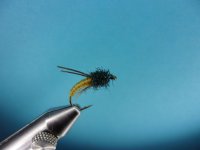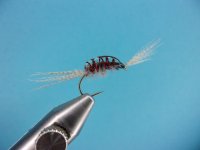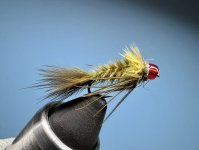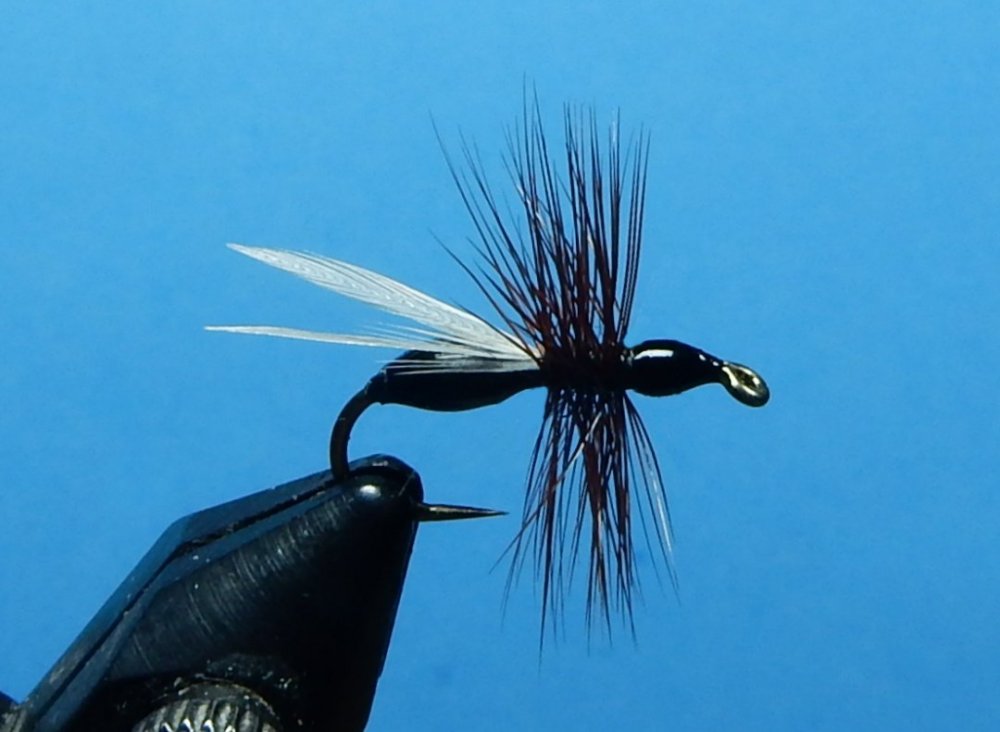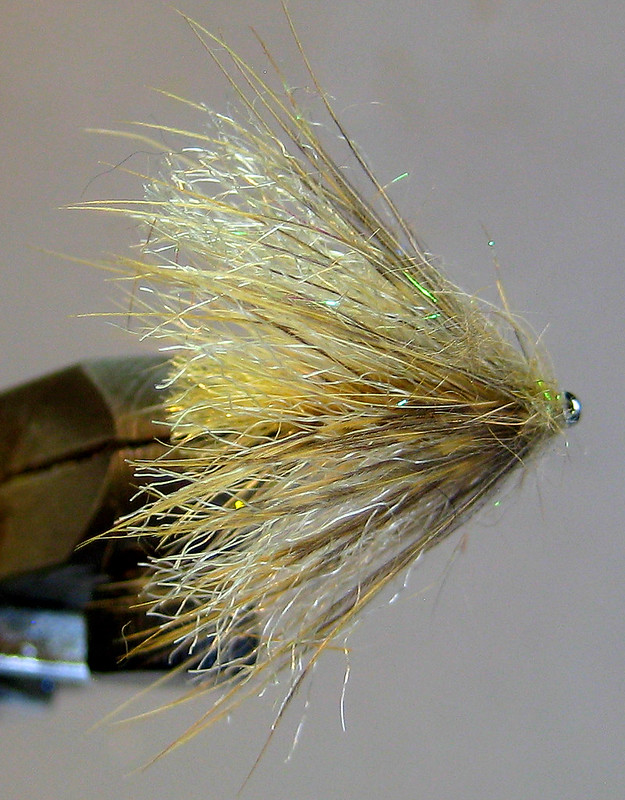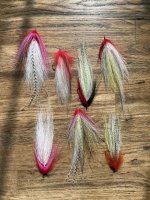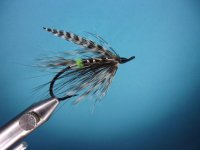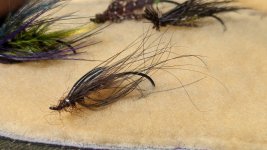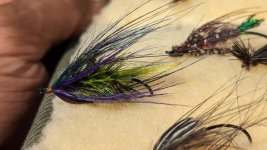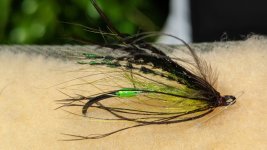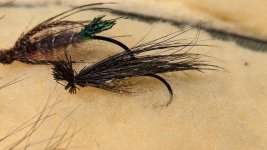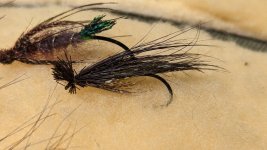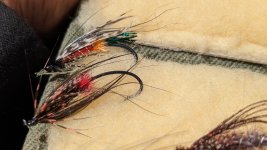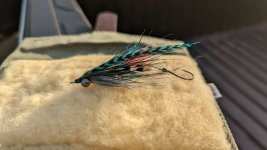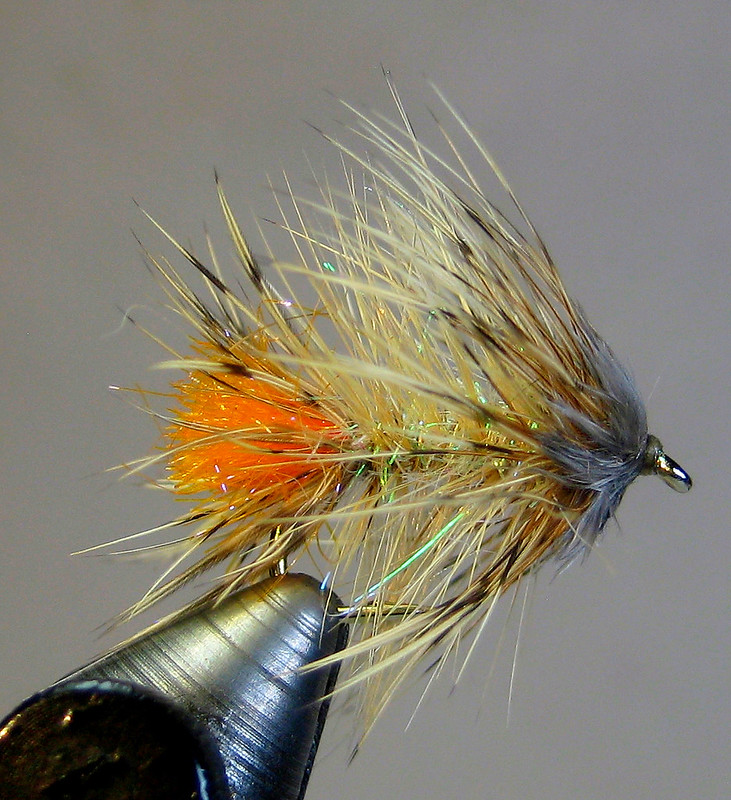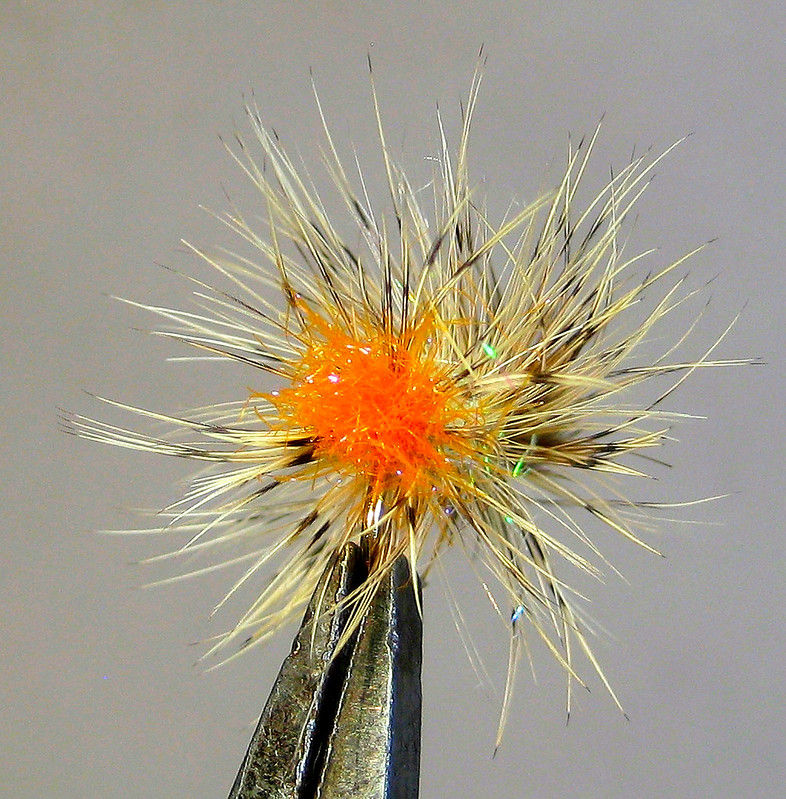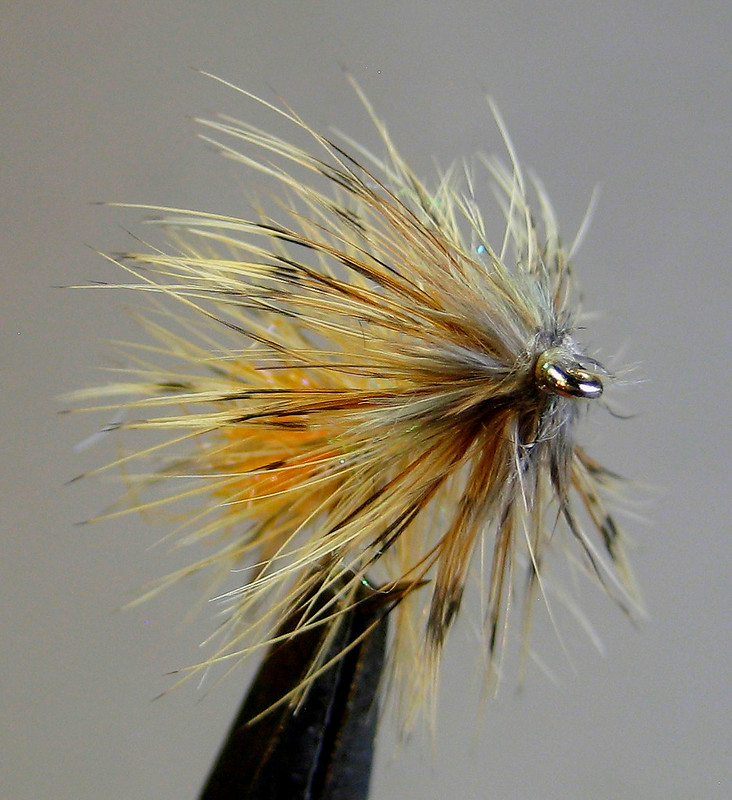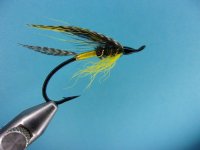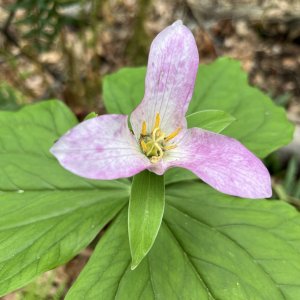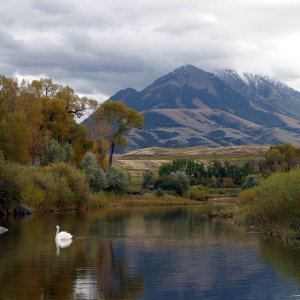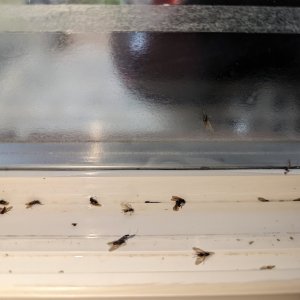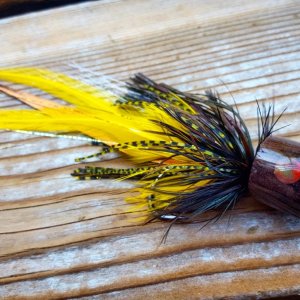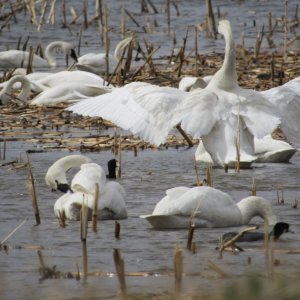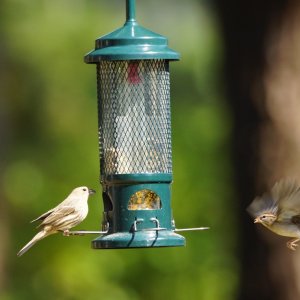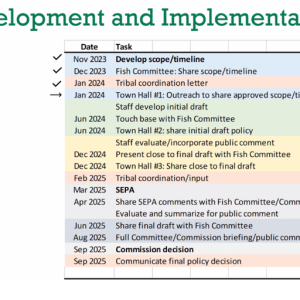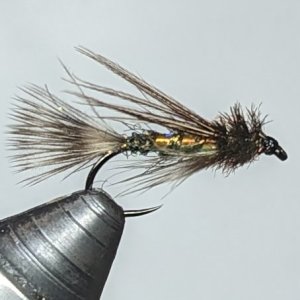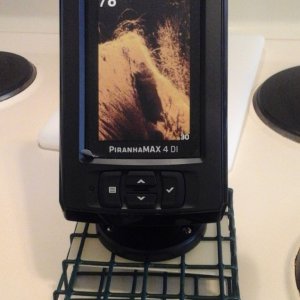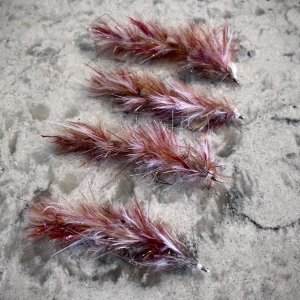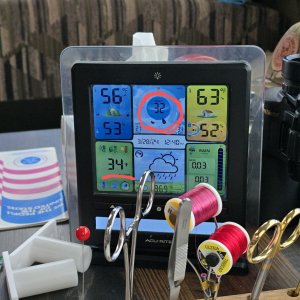It’s gonna moveGonna find out tomorrow...
You are using an out of date browser. It may not display this or other websites correctly.
You should upgrade or use an alternative browser.
You should upgrade or use an alternative browser.
What's in your vise?
- Thread starter Billy
- Start date
Tigers.Bulls or tigers??
Bullies would probably love it too. With all of the segments it'll move in current without much action imparted by me = a good thing
Such a cool looking fly I decided to take a stab at it. I debated posting this but thought it’d be interesting to see my very first attempt and deconstruct what went wrong.In the spirit of “Flies that fish” I’ll put up what I laughingly call my Soft Hackle DeStreamer.
While I bet my version would look a lot better in the water, and probably even fool a hungry fish, here’s where I think I goofed up, and will correct next time:
1). I got the proportion along the shank wrong right off the bat. I read1/3 instead of 2/3 and you can see the black splice in the diamond braid where I tried to correct things. I should’ve started over at this point but once your into a fly sometimes you want to power through. The hackle tips and KF actually came out okay, they just should be tied up further up.
2) I tried to Palmer a barred marabou feather which worked ok but didn’t give enough fullness to the body. Next time I’ll do the clump method and use two feathers.
3) I used a mallard feather that was a bit to stiff to get a nice wrap. I also stripped the wrong side so had to wrap it backwards to get the fibers to lay back. It was a $shit show.
4) I tried a red glass bead but left too much room and had to fill in a gap between the collar with some red dubbing.
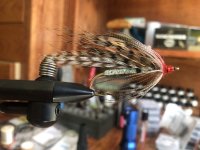
But thanks Mike for the step by step and I will get it better next time!
Edit: BTW I used a TMC 9395 size 2 hook. I think next time will try a #4.
Andy
Last edited:
Andy, you are on-track. That fly will fish.Such a cool looking fly I decided to take a stab at it. I debated posting this but thought it’d be interesting to see my very first attempt and deconstruct what went wrong.
While I bet my version would look a lot better in the water, and probably even fool a hungry fish, here’s where I think I goofed up, and will correct next time:
1). I got the proportion along the shank wrong right off the bat. I read1/3 instead of 2/3 and you can see the black splice in the diamond braid where I tried to correct things. I should’ve started over at this point but once your into a fly sometimes you want to power through. The hackle tips and KF actually came out okay, they just should be tied up further up.
2) I tried to Palmer a barred marabou feather which worked ok but didn’t give enough fullness to the body. Next time I’ll do the clump method and use two feathers.
3) I used a mallard feather that was a bit to stiff to get a nice wrap. I also stripped the wrong side so had to wrap it backwards to get the fibers to lay back. It was a $shit show.
4) I tried a red glass bead but left too much room and had to fill in a gap between the collar with some red dubbing.
View attachment 67562
But thanks Mike for the step by step and I will get it better next time!
Edit: BTW I used a TMC 9395 size 2 hook. I think next time will try a #4.
Andy
Speaking of Flies that Fish! - The Soft Hackle DeStreamer scored big time again this morning helping me connect with several dozen browns on the Firehole River.
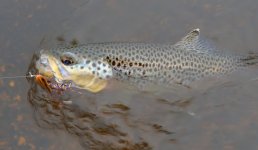
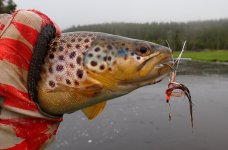
Now to your issues. 1) Scrap the bead, you'll know why in a bit.
2) The 1/3rd point behind the hook eye is important as it gives the fly the correct proportions when finished. When finished, the Mallard should be right up against the hook eye. It doesn't matter if the braid extends a bit into that space as you can wrap over it, but you shouldn't leave it short. Secure flash and hackle at that 1/3 point. Plan on using 1/2 of that space for the marabou and 1/2 for the Mallard.
3) Using clumps of marabou makes it easy to create full or sparse effects, assess desired length and they are tied in just like any other loose material.
4) When palmering the marabou and mallard there are two schools of practice. Gartside preferred tying them in by the butt, but other accomplished tyers preferred tying them in by the tips. Either works, but I find the tip method preferable as it is easier to manage the fibers as you palmer the feather.
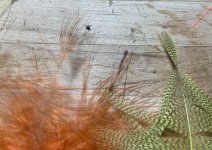
5) For each feather fold back the fibers from the tip leaving a tip a bit shorter than the average fiber length. Lay the tip along the hook shank at the tie in point with the tip facing the hook eye. Take two tight wraps at that point and then fold the tip back and take two more wraps. Holding the butt of the feather begin winding it forward. For each wind, stroke the fibers rearward and hold during the next wind. It is OK to overwrap the fibers within the allotted space as long as they are facing rearward. Then tie off and trim. When palmering the Mallard, use the same method. Don't strip the main fibers. For each wind, stroke the fibers rearward until you reach the hook eye. Again, it is OK to overwrap some fibers as you wind toward the hook eye. When the butt of the Mallard feather reaches the hook eye take two tight wraps making sure all the fibers are trapped rearward. Fold the butt back along the hook shank and cover with wraps rearward until the desired head size is achieved. (no need for a bead). Trim the exposed butt and complete the head with either a whip finish or a couple of half-hitches. I seal the head with a thick UV resin and coat with Sally Hansen.
Good Luck and let's see your Soft Hackle DeStreamer connected to some fish.
Thanks Mike for the tying tips!Andy, you are on-track. That fly will fish.
Speaking of Flies that Fish! - The Soft Hackle DeStreamer scored big time again this morning helping me connect with several dozen browns on the Firehole River.
View attachment 67616
View attachment 67617
Now to your issues. 1) Scrap the bead, you'll know why in a bit.
2) The 1/3rd point behind the hook eye is important as it gives the fly the correct proportions when finished. When finished, the Mallard should be right up against the hook eye. It doesn't matter if the braid extends a bit into that space as you can wrap over it, but you shouldn't leave it short. Secure flash and hackle at that 1/3 point. Plan on using 1/2 of that space for the marabou and 1/2 for the Mallard.
3) Using clumps of marabou makes it easy to create full or sparse effects, assess desired length and they are tied in just like any other loose material.
4) When palmering the marabou and mallard there are two schools of practice. Gartside preferred tying them in by the butt, but other accomplished tyers preferred tying them in by the tips. Either works, but I find the tip method preferable as it is easier to manage the fibers as you palmer the feather.
View attachment 67618
5) For each feather fold back the fibers from the tip leaving a tip a bit shorter than the average fiber length. Lay the tip along the hook shank at the tie in point with the tip facing the hook eye. Take two tight wraps at that point and then fold the tip back and take two more wraps. Holding the butt of the feather begin winding it forward. For each wind, stroke the fibers rearward and hold during the next wind. It is OK to overwrap the fibers within the allotted space as long as they are facing rearward. Then tie off and trim. When palmering the Mallard, use the same method. Don't strip the main fibers. For each wind, stroke the fibers rearward until you reach the hook eye. Again, it is OK to overwrap some fibers as you wind toward the hook eye. When the butt of the Mallard feather reaches the hook eye take two tight wraps making sure all the fibers are trapped rearward. Fold the butt back along the hook shank and cover with wraps rearward until the desired head size is achieved. (no need for a bead). Trim the exposed butt and complete the head with either a whip finish or a couple of half-hitches. I seal the head with a thick UV resin and coat with Sally Hansen.
Good Luck and let's see your Soft Hackle DeStreamer connected to some fish.
I tried again and got the proportions much better and found a much larger barred marabou feather to Palmer on. The mallard was still a struggle I think I need to use a smaller more flexible feather next time. But it turned out well and will look even better when wet. Here’s my Take 2:
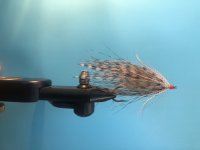
I’m excited to try them in MT later this summer or fall. Do you fish them off a sink tip or floating line?
Thanks again, andy
Great tie, that is a fly that will fish.Thanks Mike for the tying tips!
I tried again and got the proportions much better and found a much larger barred marabou feather to Palmer on. The mallard was still a struggle I think I need to use a smaller more flexible feather next time. But it turned out well and will look even better when wet. Here’s my Take 2:
View attachment 67633
I’m excited to try them in MT later this summer or fall. Do you fish them off a sink tip or floating line?
Thanks again, andy
I fish most unweighted streamers on either a 5 weight (MT) or 7 weight (FL) on 30’ SONAR sinktips with either 150 grain or 200 grain line and a short 3-4’ 0X tippet depending on the rod. What I am aiming for is good distance with accuracy. It’s a setup for big, medium rivers 50-100’+ wide rivers we have here in SW Montana.
singlehandjay
Life of the Party
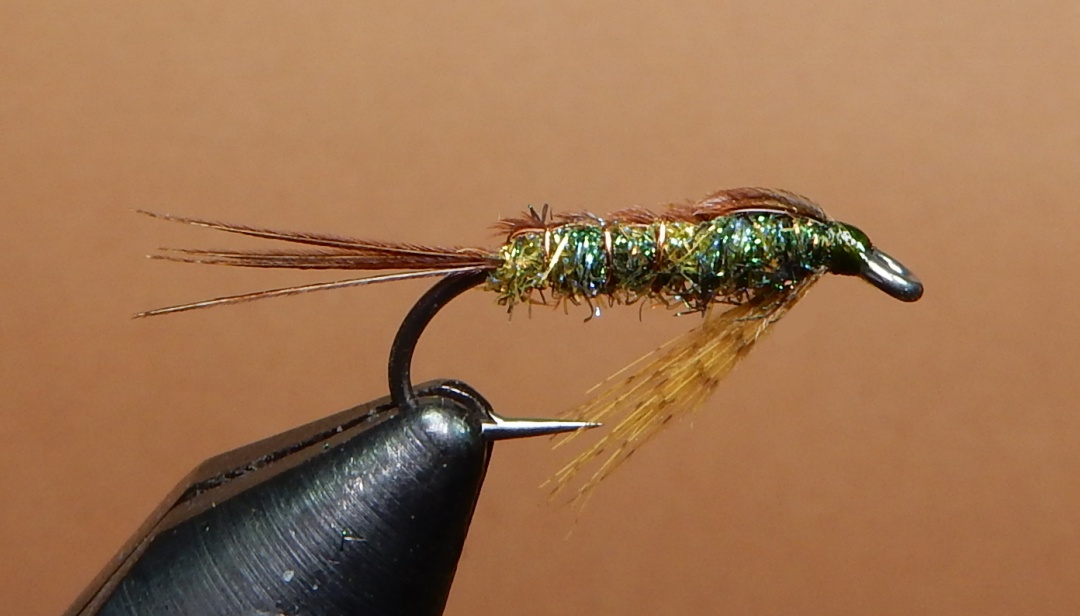
Clearwater Callibaetis
Phil Rowley - Brian Chan
Hook - Mustad Heritage S82AP, size 12
Thread - Olive
Tail - Pheasant tail fibers
Body - Light-olive ice dubbing or a substitute
Rib - Fine copper wire
Back and wing case - A very small bunch of pheasant tail fibers
Legs - Mallard flank fibers, dyed yellow
Favorite Flies: A Comprehensive Guide to Tying and Fishing the Best Flies Available - David Klausmeyer
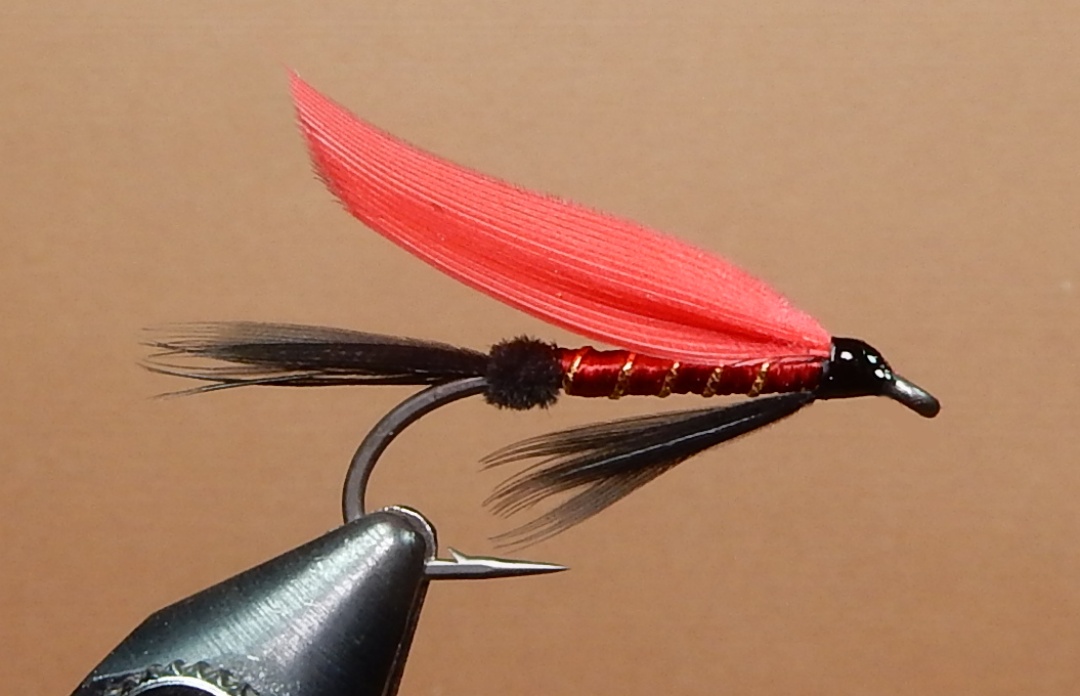
Pelee Island
Tail - Black hackle
Butt - Black chenille
Ribbing - Gold tinsel
Body - Scarlet floss
Hackle - Black
Wing - Scarlet
Flies - J Edson Leonard
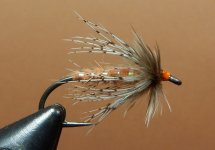
October Caddis Wet Fly
Hook - Curved-shank nymph hook or a 2X-long wet-fly hook, size 6 or 8
Thread - Orange
Body - Light-orange rabbit dubbing with the guard hairs removed, or your favorite brand of wet-fly dubbing
Rib - Pearl tinsel
Hackle - Partridge
Head - A pheasant aftershaft feather
Favorite Flies: A Comprehensive Guide to Tying and Fishing the Best Flies Available - David Klausmeyer

